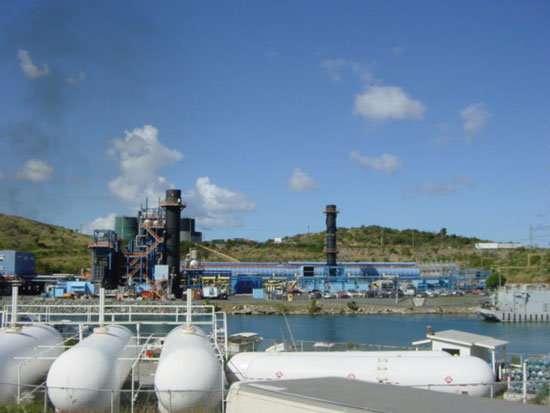New sources of fresh water from the sea?
Seawater desalination is expected to be the solution to the problem of water shortage for 1.8 billion people who will live in dry areas by 2025. The biggest obstacles to turning the expectation into reality are effective and cost.
Sweetened seawater
Scientists predict that by 2016, the amount of freshwater derived from desalinated seawater will be about 38 million cubic meters of freshwater, double that of 2008. Modern seawater desalination plants use reverse osmosis technology . Salt water is pressed through ultra-thin semi-permeable plastic film. Larger molecules such as iron, salt . that cannot pass through the membrane will be trapped and fresh water is filtered to the other side.

Seawater desalination plant.
This method uses less energy than previous desalination technologies , such as heating seawater to obtain fresh water from condensed steam. However, for plants that use reverse osmosis technology, energy costs still account for 40% of the total operating costs.
Solution of the rich
Reverse osmosis membranes have been greatly improved since its inception in the 1960s. However, there is a problem that has not been thoroughly solved. It is after a period of use, the bacteria in the water accumulate on the membrane, making it difficult for water to pass through, reducing the efficiency of the device. Chlorine works very well to clean up bacteria, but according to Dr. Menachem Elimelech (Yale University, USA), the type of common reverse osmosis membrane is now very sensitive to chlorine and quickly degraded when exposed to this chemical. .
The cost to build and operate a seawater desalination plant using reverse osmosis technology is also a matter of concern. In 2010, Australia's five largest cities invested $ 13.2 billion to build seawater desalination plants. With this cost, the areas of water shortage are most severe due to climate change, mainly developing countries are very hard to hope to exploit seawater to satisfy their thirst. According to Dr. Yoram Cohen (University of California, USA), one of the solutions is to standardize plant equipment, build smaller, more efficient factories. Localities that wish to purchase equipment from any source and assemble themselves according to their designs.
Another problem is the treatment of saline generated during desalination. If the factory is in the coastal area, salt water can be discharged back to the sea. But if the factory is in the mainland, things will be much more complicated. Many localities have regulations to not discharge wastewater from factories to desalinate ponds and sewers. In some other places, underground salt water discharge may not be licensed and must be very expensive.
According to Dr. Menachem Elimelech, although it seems very promising, in reality, seawater desalination should not be considered a miracle medicine for global water shortage. In many cases, the best solution is still to plan scientific land and preserve available freshwater resources.
- 50% of the world's population lacks fresh water by 2050
- Create fresh water with solar energy
- 8th graders make devices that turn seawater into fresh water
- Panic because of water poisoning
- Most surface water sources in Ho Chi Minh City have been polluted
- Turning seawater into fresh water for Truong Sa soldiers
- Successfully tried the fresh water treatment system in Ly Son
- Clean water and numbers to speak
- The two boys turned seawater into fresh water thanks to the waves
- Salt water can generate 1,000 times more electricity than a solar battery
- Turn seawater into fresh water at a super cheap cost
- 'Digging mine' fresh water in the seabed
 Is the magnetic North Pole shift dangerous to humanity?
Is the magnetic North Pole shift dangerous to humanity? Washington legalizes the recycling of human bodies into fertilizer
Washington legalizes the recycling of human bodies into fertilizer Lightning stone - the mysterious guest
Lightning stone - the mysterious guest Stunned by the mysterious sunset, strange appearance
Stunned by the mysterious sunset, strange appearance